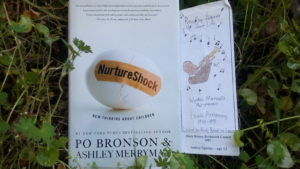Timequake as a work of fiction isn’t quite and as an autobiography might also leave a few bewildered readers unless they were regular readers of Kurt Vonnegut. Surreal fiction that isn’t quite science fiction but which also isn’t quite based in the real world is a norm for the books I remember besides the book he is best known for. Slaughterhouse Five is novel that describes his experiences in World War II during which he was captured and held as a Prisoner of War. Conditions were intolerable and many other soldiers who were captured died. The experience left Kurt Vonnegut going that peace would be achieved after the war.
Timequake (G. P. Putnam’s Sons, New York, 1997) is the last novel Kurt Vonnegut wrote and he was in his seventies at the time. In a recent post I discussed a biography that is a history based on a variety of archived material about he and his brother Bernard Vonnegut, a weather/cloud seeding scientist, and other scientists from the era, and interviews from a few surviving family members. https://transcendingsquare.com/2018/03/01/who-owns-science-or-should-all-ideas-be-shared/
The nonfiction book and novel include some of same stories from the family’s history but written in different styles. Both books provide an interesting look into the effort involved in building a successful writing career. While the nonfiction biography/history was written more recently it was helpful to read it first as it provides more detail in consecutive order about Kurt Vonnegut and his family and it helped provide a better understanding of some of the pain and difficulty that may have led to some of the more surreal and cryptic stories that Kurt Vonnegut included in Timequake.
Part of the book includes a storyline that is fiction but which is also somewhat autobiographical because the main character is an author that he considered somewhat of an alter ego. Nice to have a fictions voice to say the things that polite society wouldn’t say or might not want to hear. The storyline is what the title is derived from, all the characters including Kurt Vonnegut are supposedly trapped in a Timequake and they are having to repeat everything they did in the previous ten years over the course of the next ten years. When time unfreezes again people aren’t prepared for a return of free will. The author character tells them:
‘You were sick, but now you’re well again, and there’s work to do,’
The phrase catches on and more people start to repeat it.
The underlying theme is about peace and ending gun violence. It is also about appreciating each other and the little things in life more than television shows. It is about self respect and holding yourself together when it might be difficult. The book is timely and may leave your self respect slightly shredded at points but you may arrive on the other end of the Timequake stronger and ‘there’s work to do,’ so it may be worth the slight shredding. An example:
‘Men are insane. Women are psychotic.’
Having survived being a Prisoner of War and the Allie’s carpet bombing of Dresden may give some license for questioning human nature and the line isn’t flattering to either gender. Six of one, half a dozen of the other – who among us is completely sane at all times?
The title may have to do with an experience mentioned on page 129 that occurred after the Allie’s won WWII but Kurt Vonnegut hadn’t returned home yet. He and another soldier found a Nazi soldier as he lay dying. The soldier asked them to leave him to die and then signaled that he had something else to say. Last words? They listened:
‘I have just wasted the past ten years of my life,’ he said.
Kurt Vonnegut followed the story with a line describing the last words as a Timequake.
The Nazi soldier is dead and far more than ten years were lost in WWII but there is always tomorrow for the rest of us who are still reading and thinking.
‘You were sick, but now you’re well again, and there’s work to do.‘
Disclosure: This information is being shared for the purpose of education or entertainment within the guidelines of Fair Use. Opinions and any errors in the summarized material are my own.

